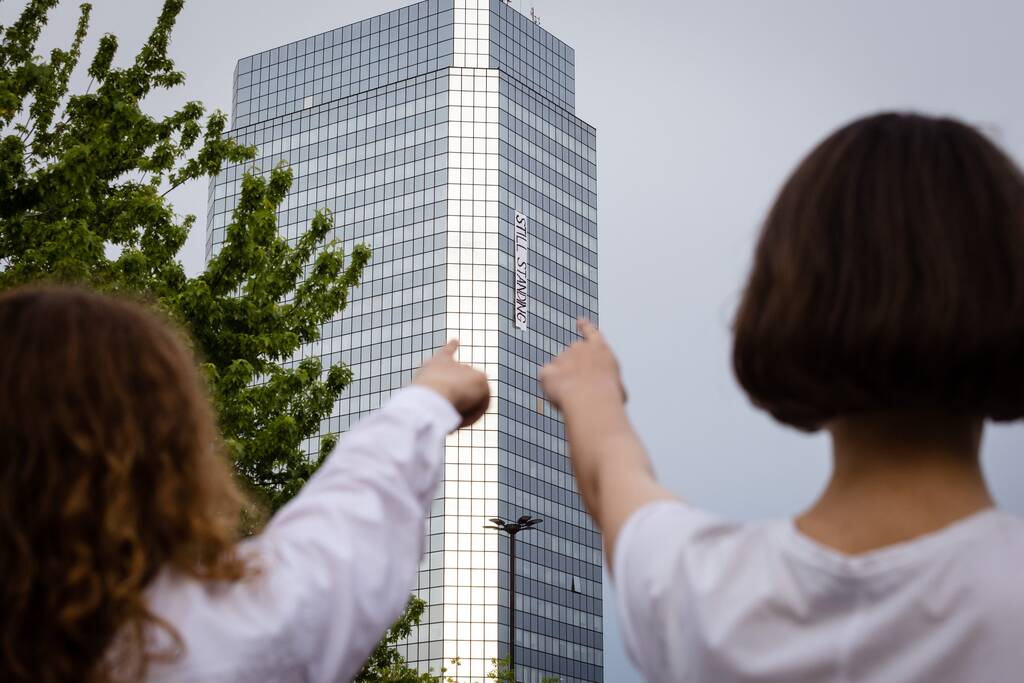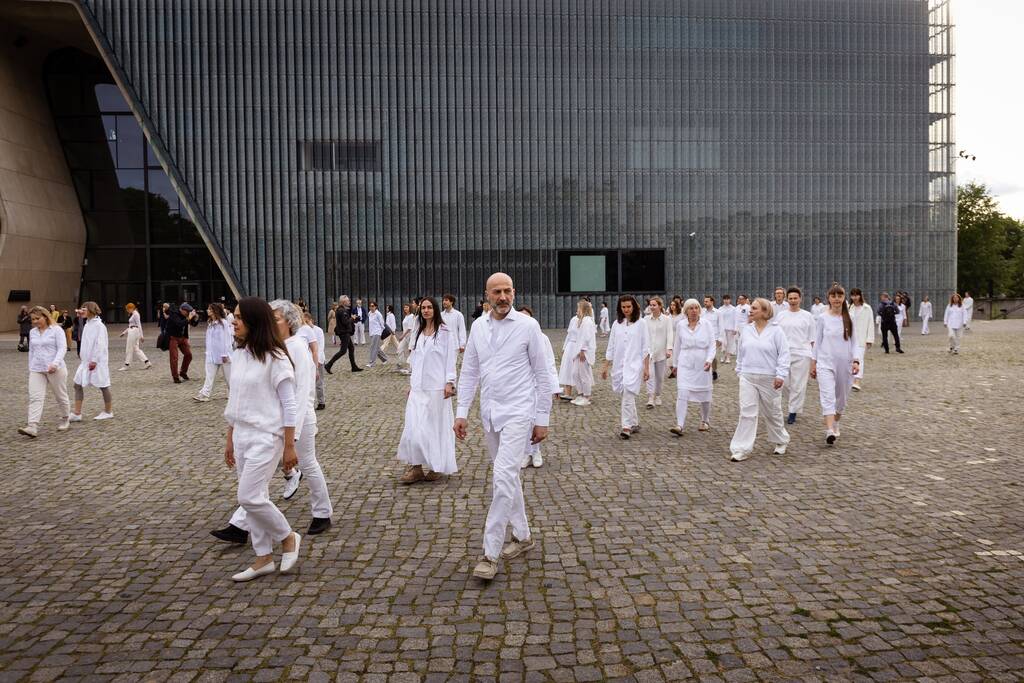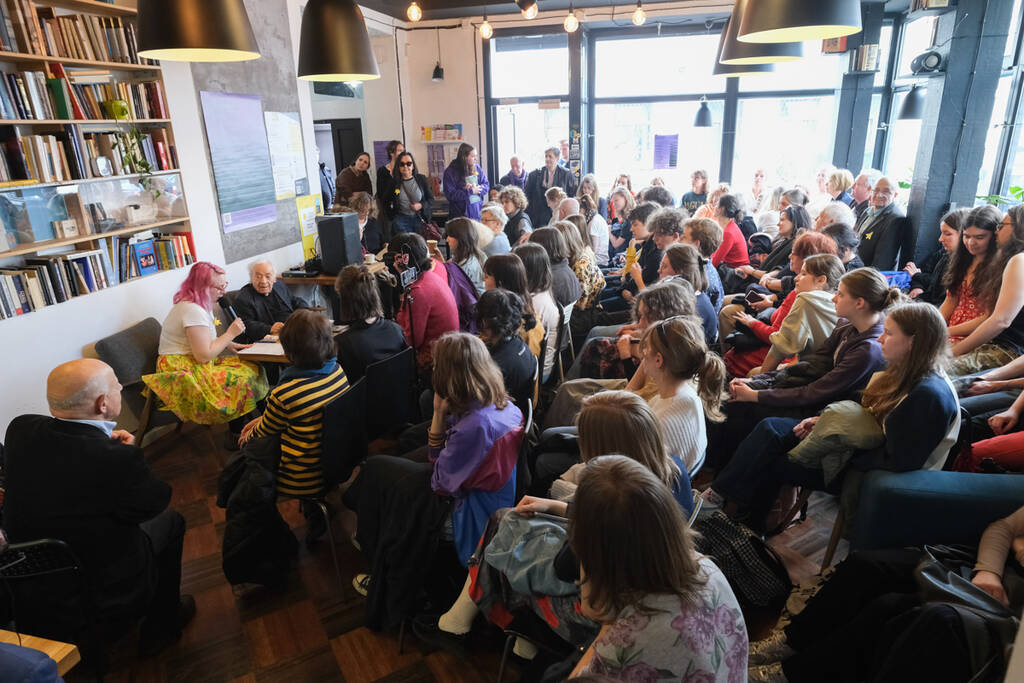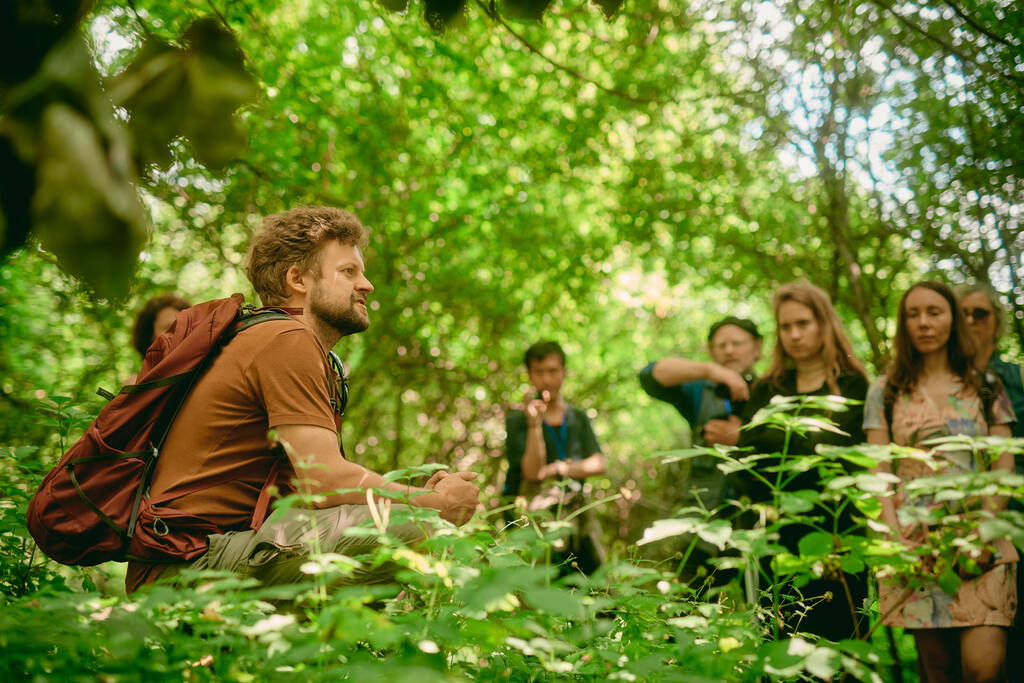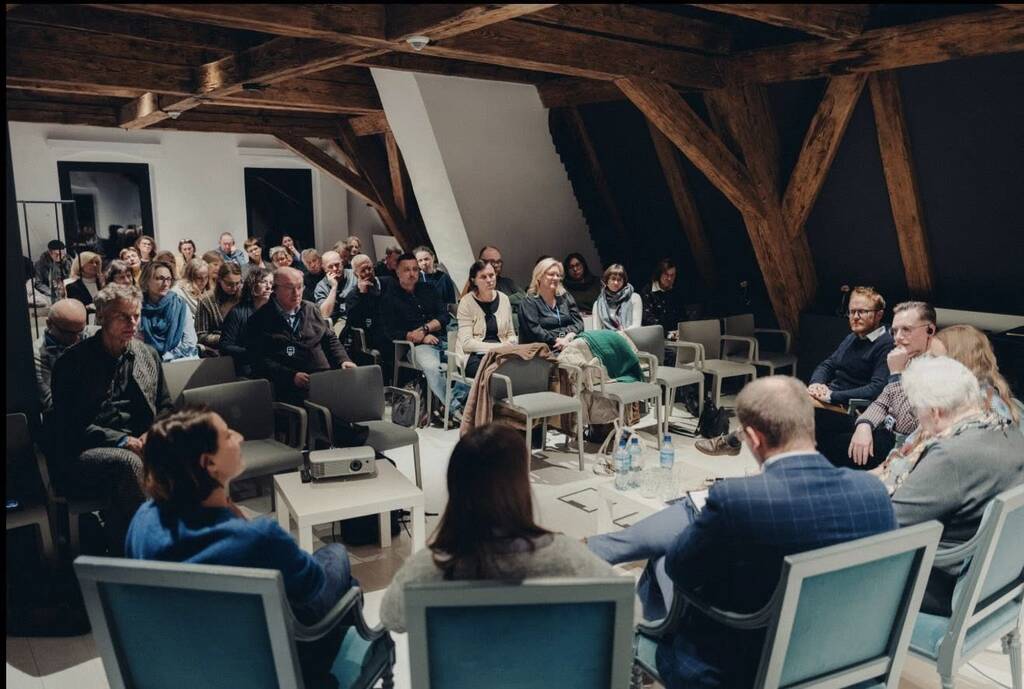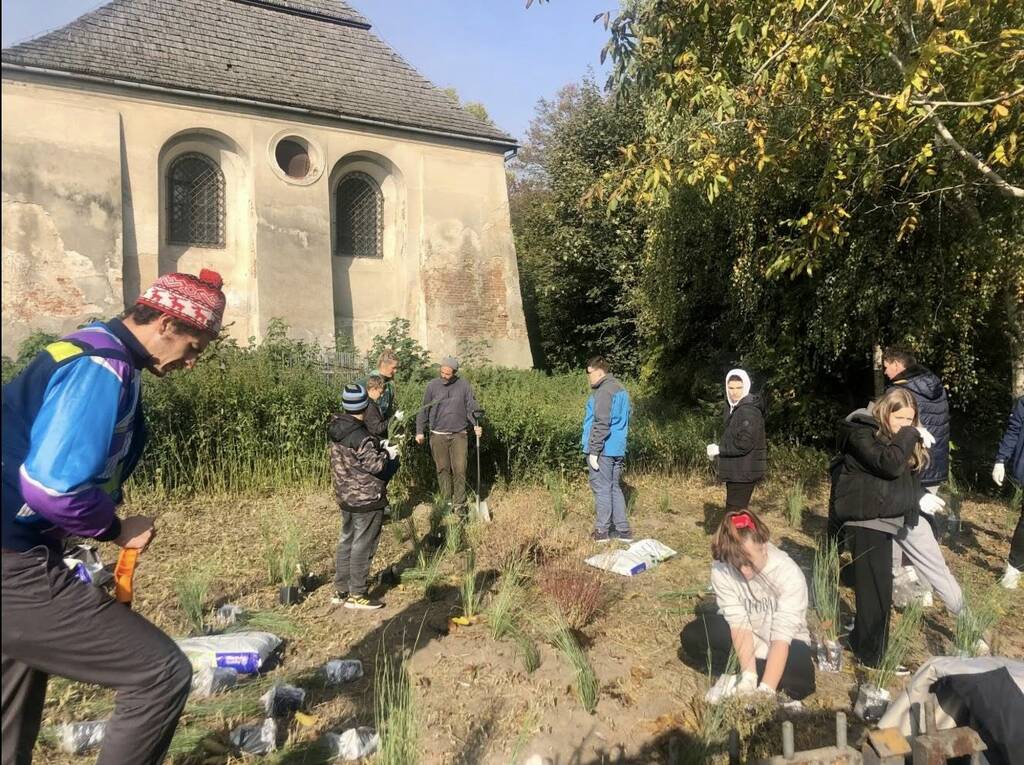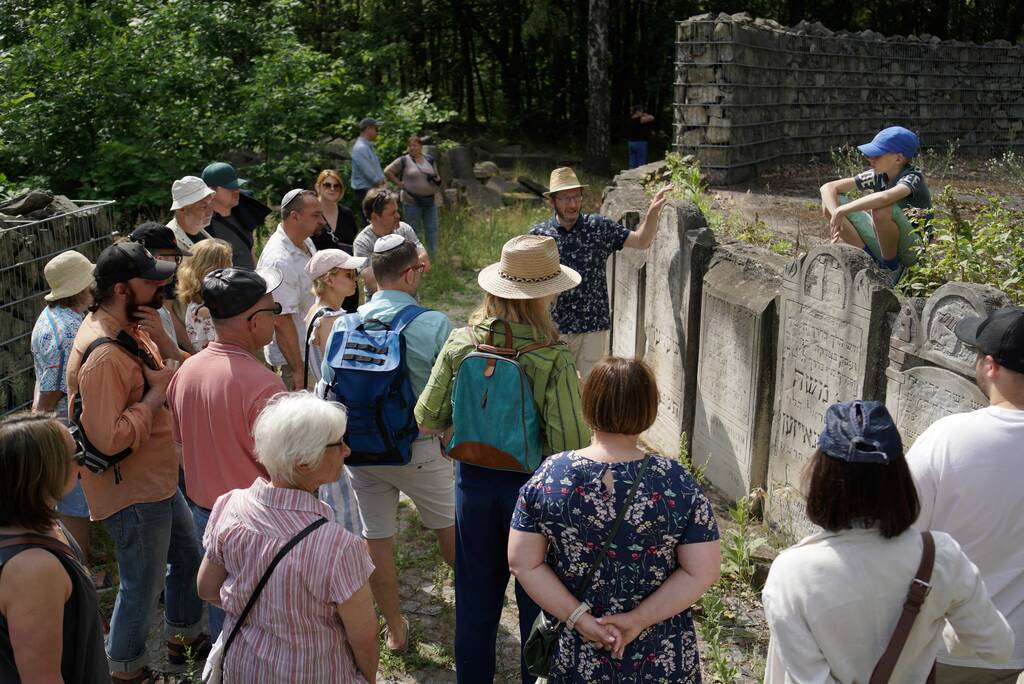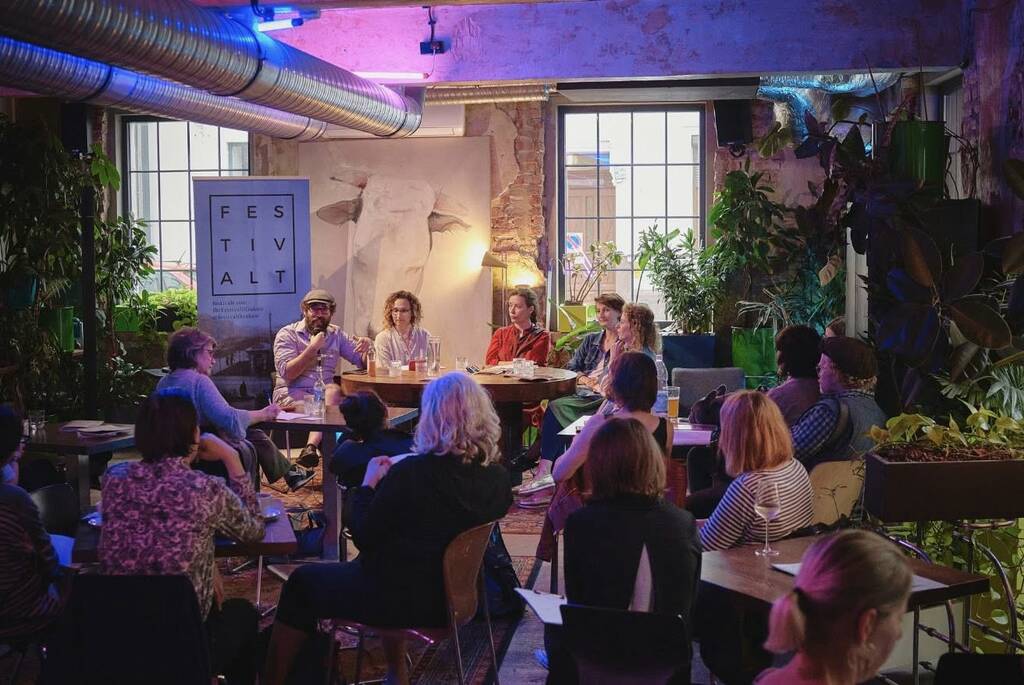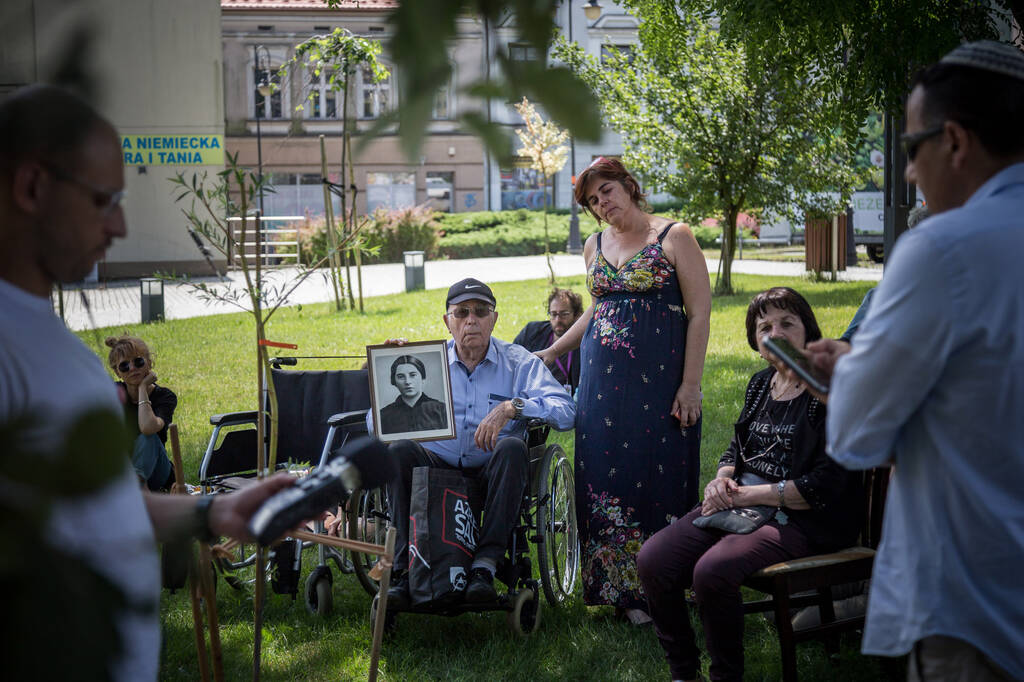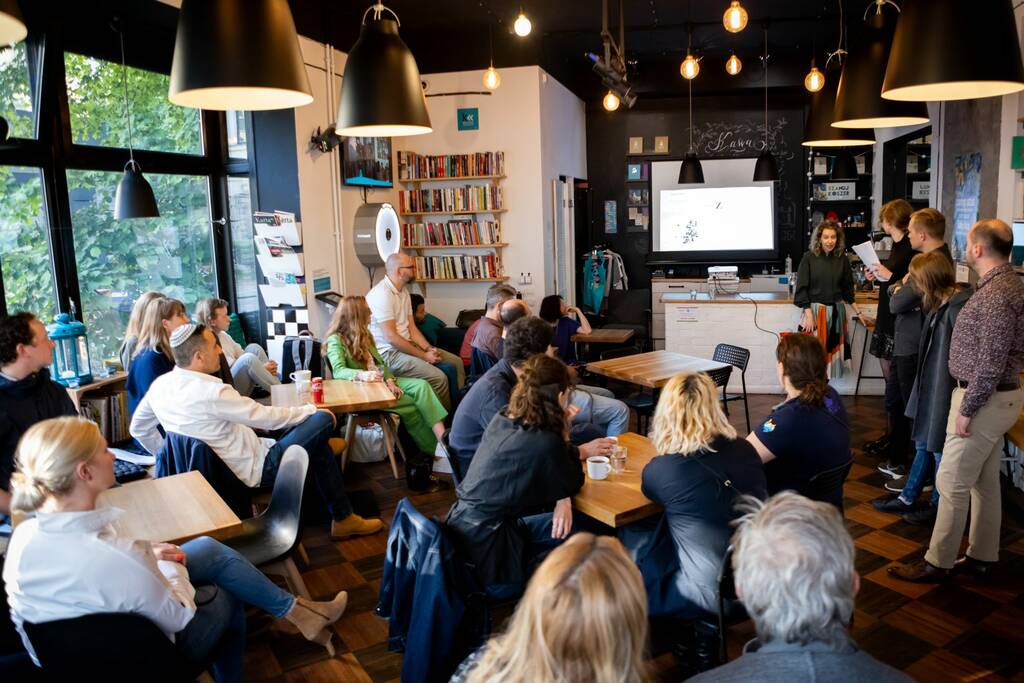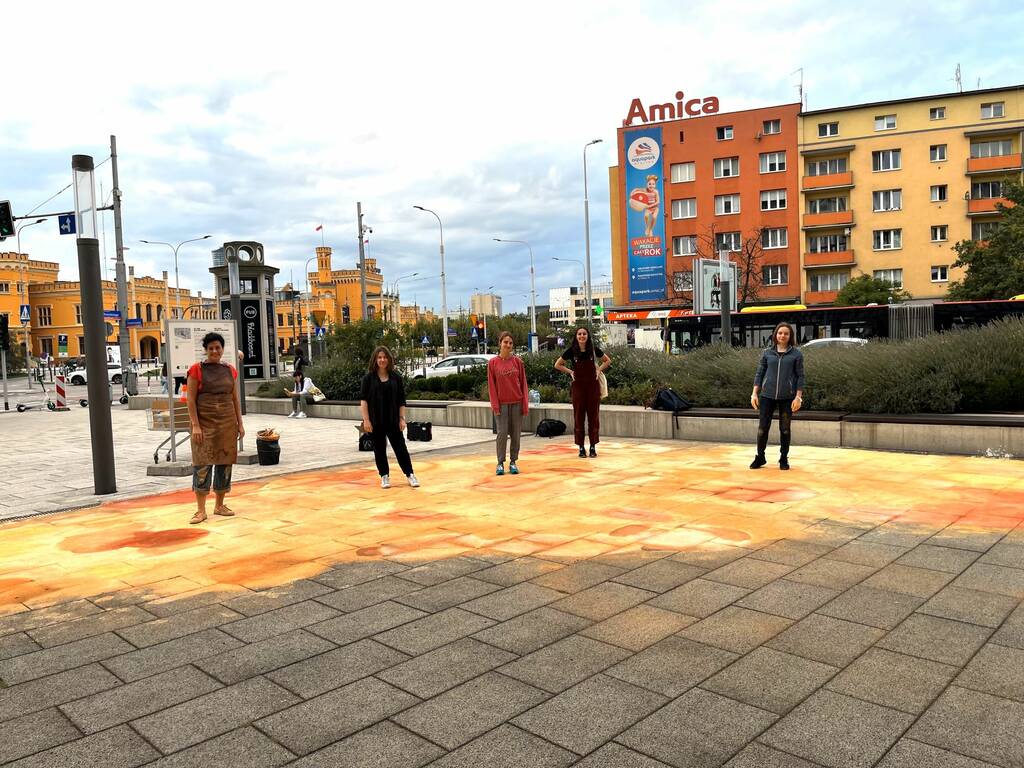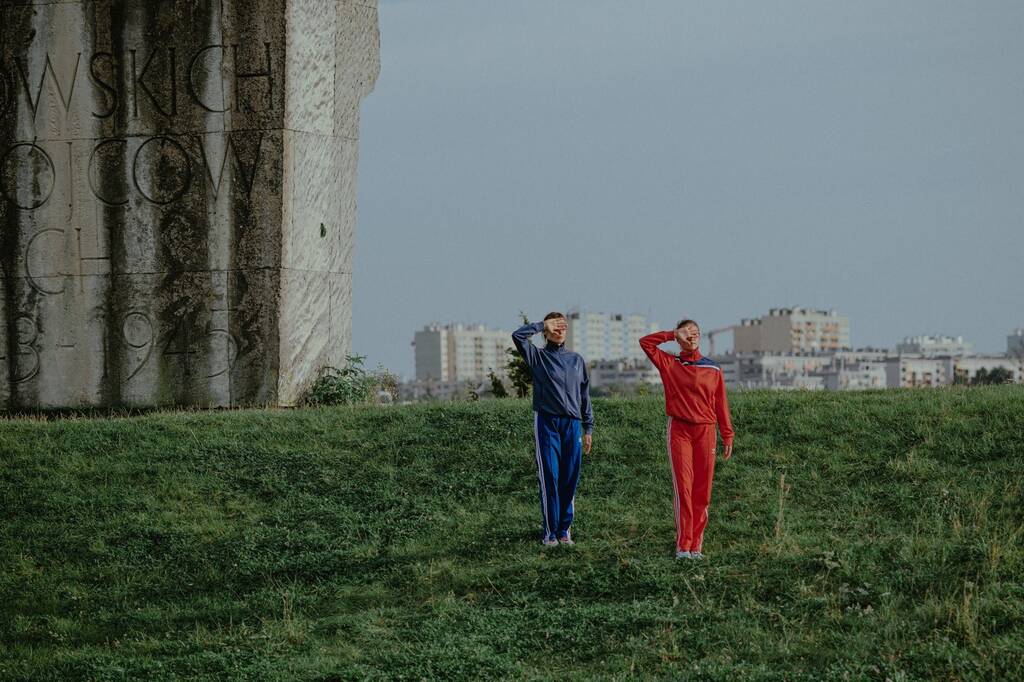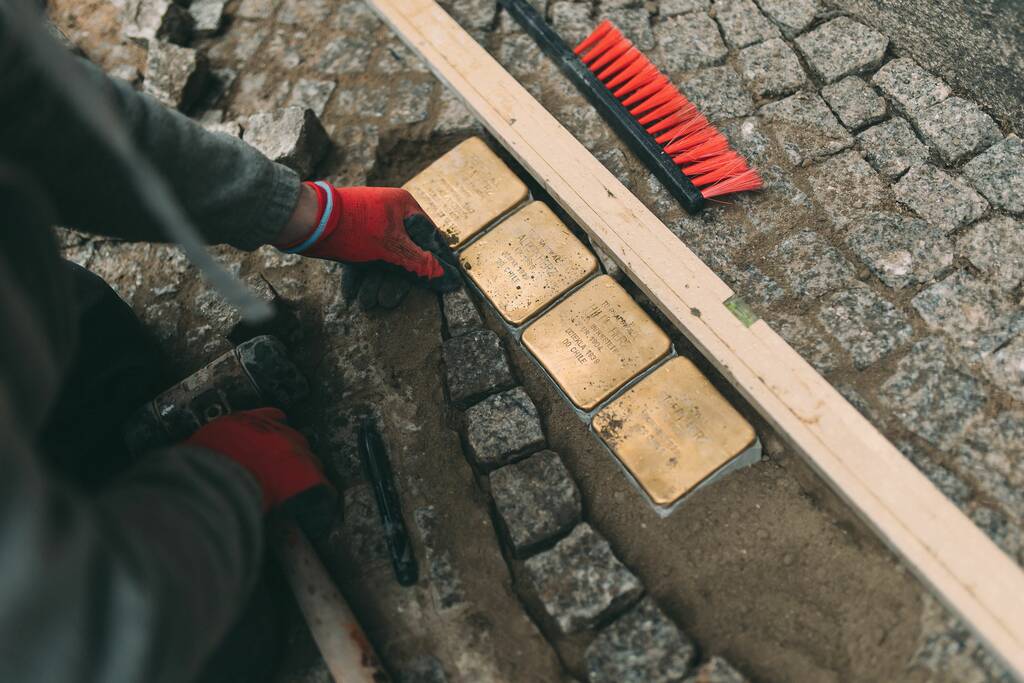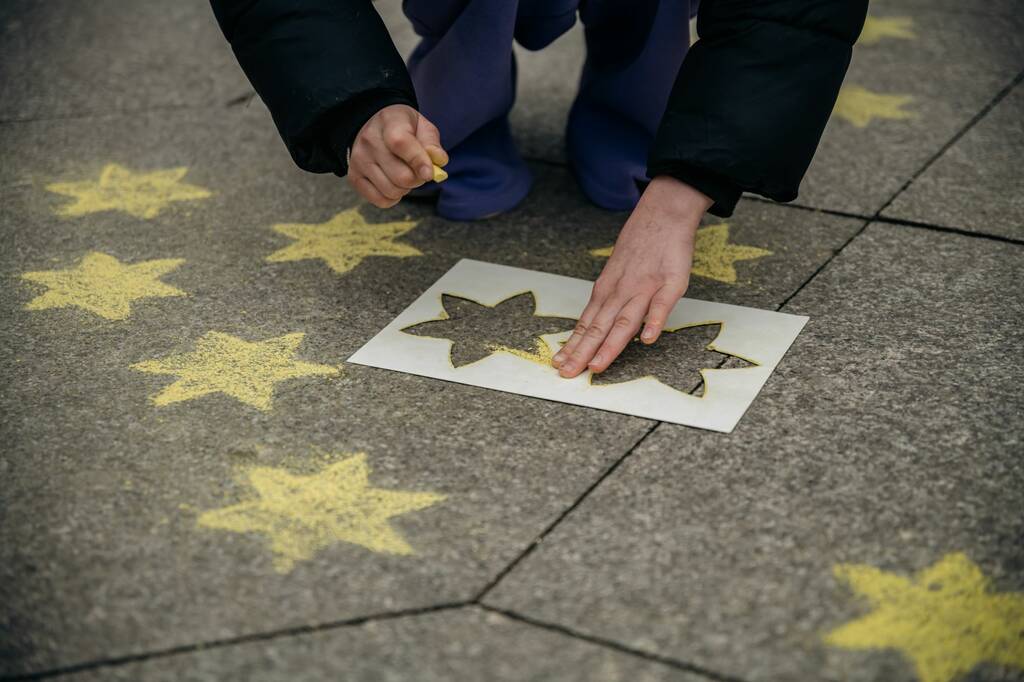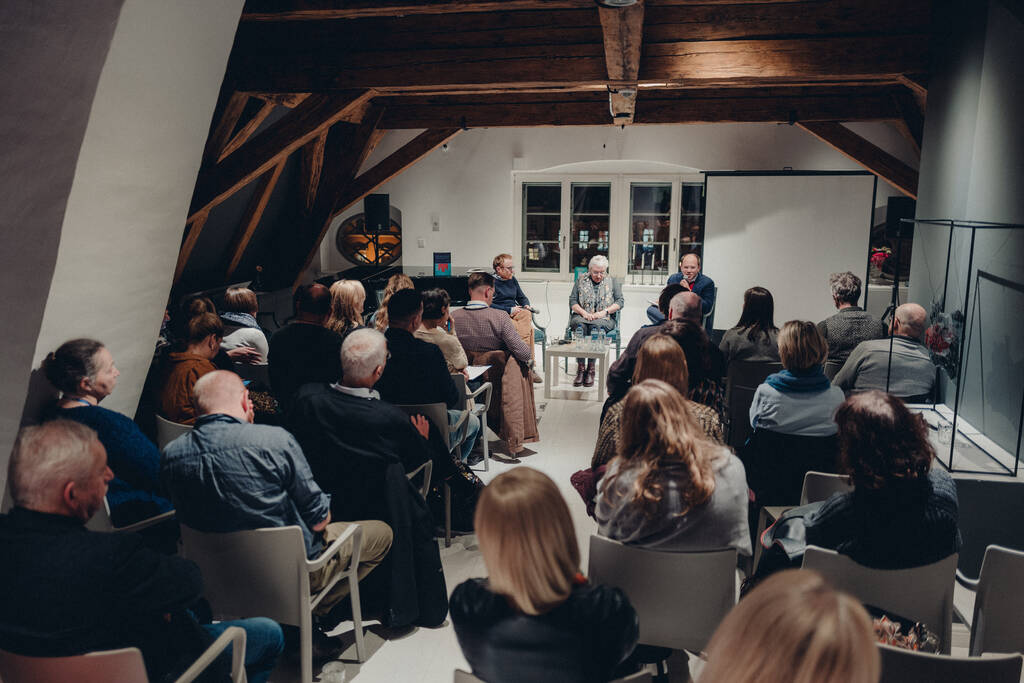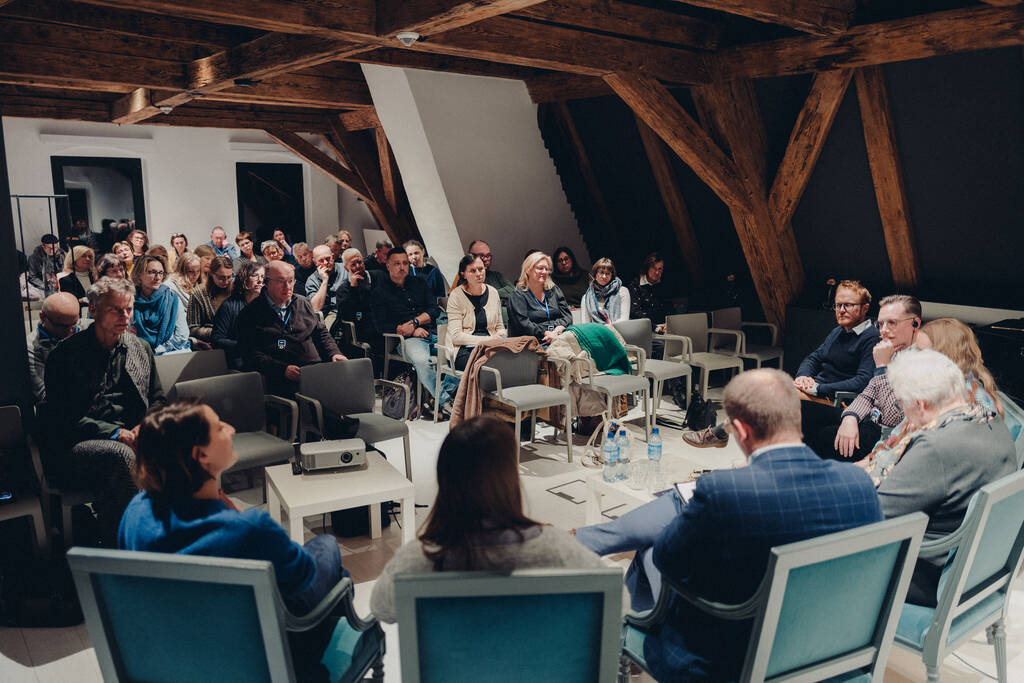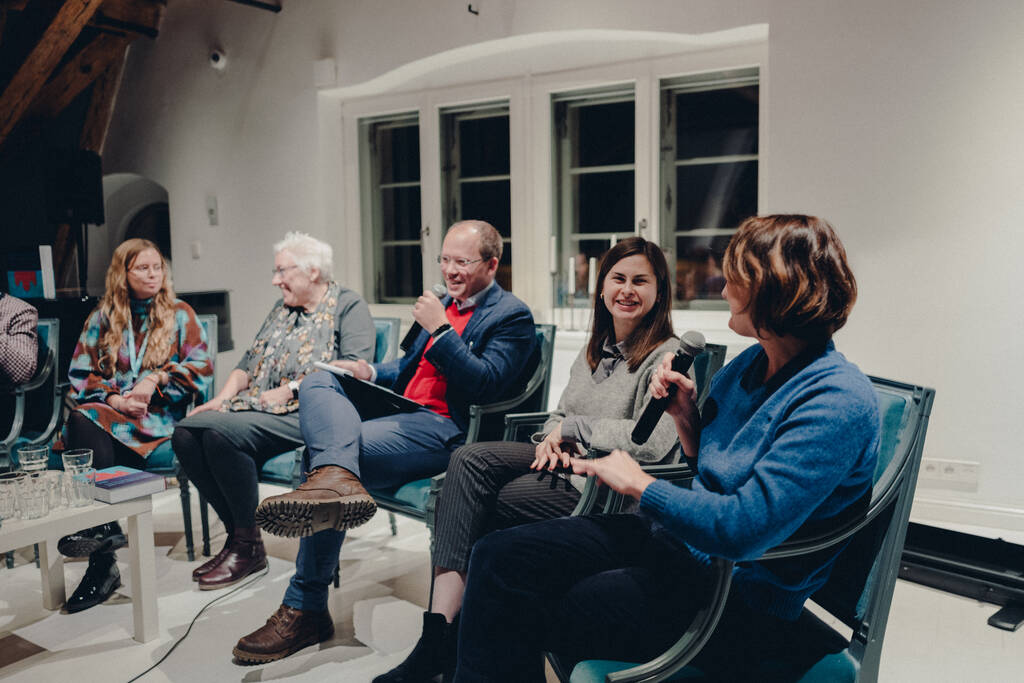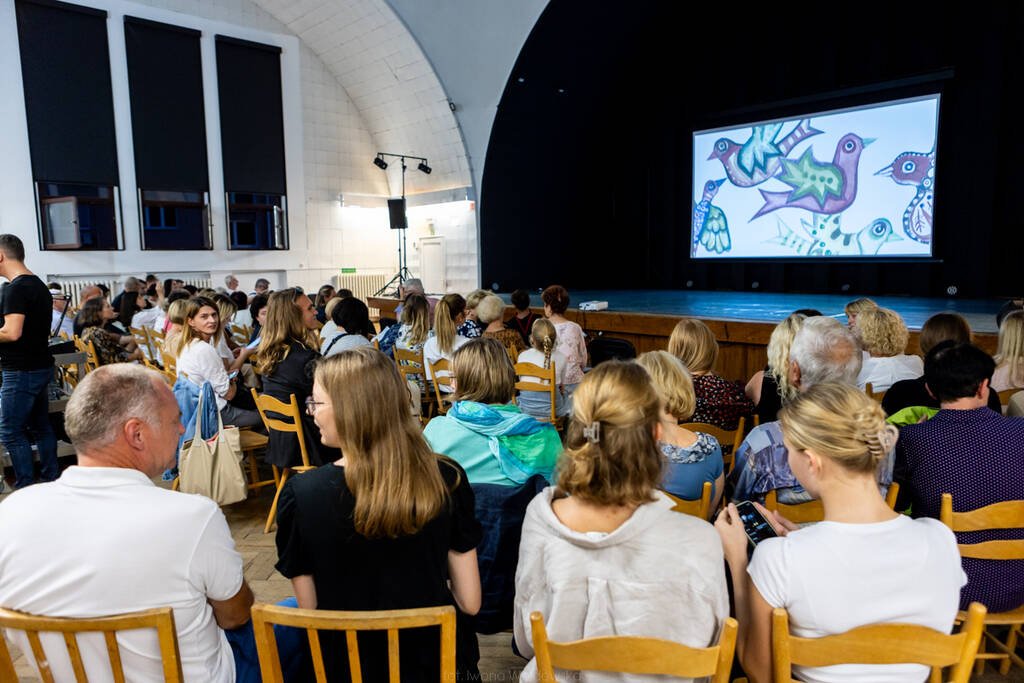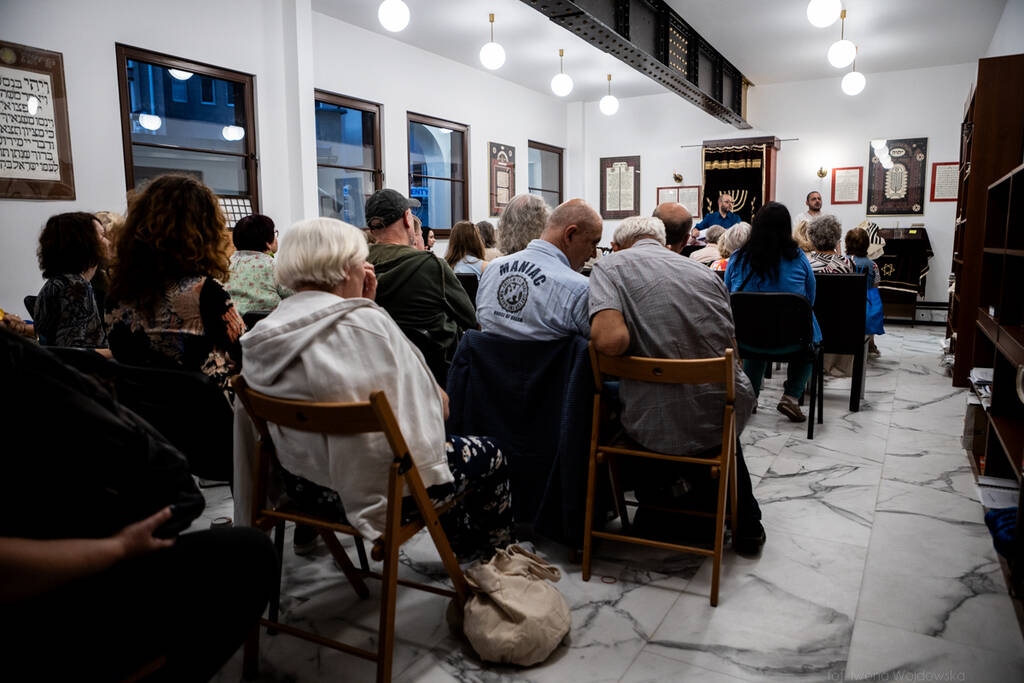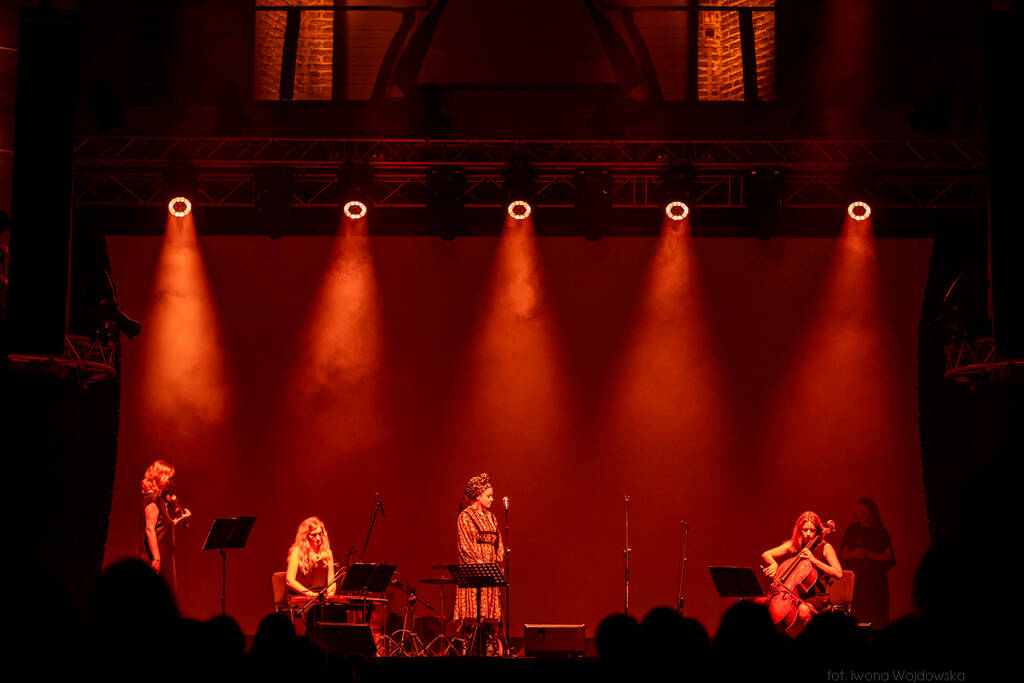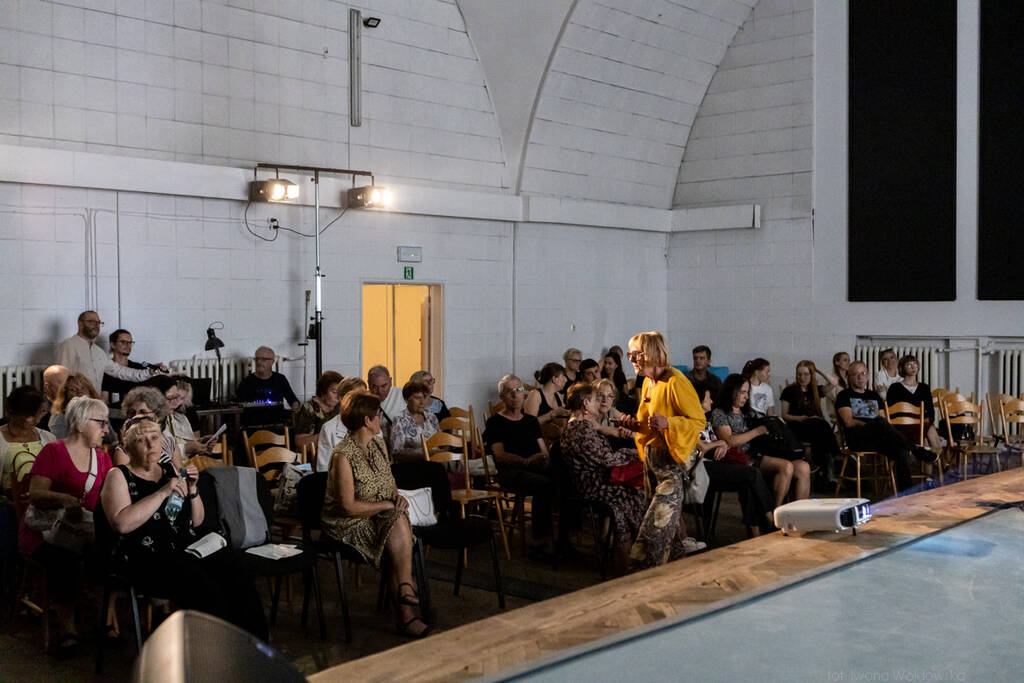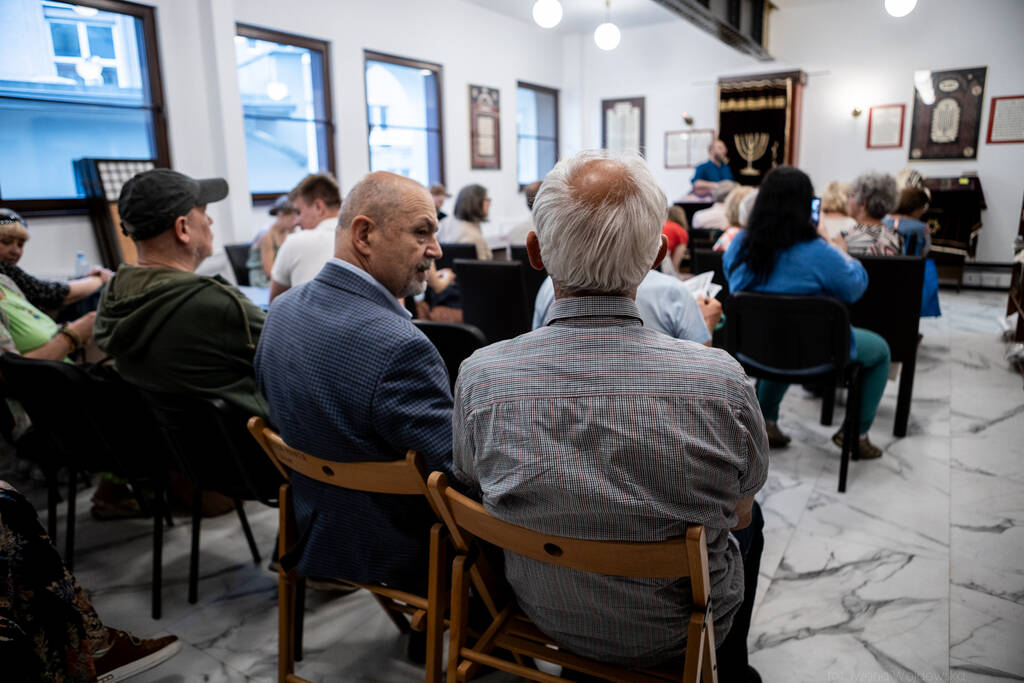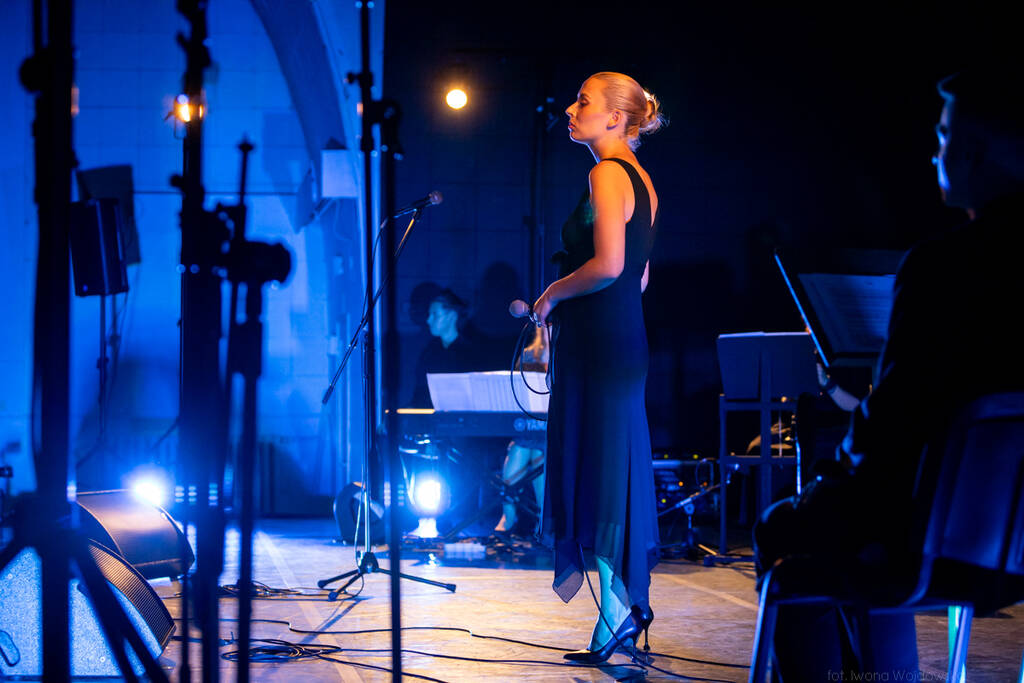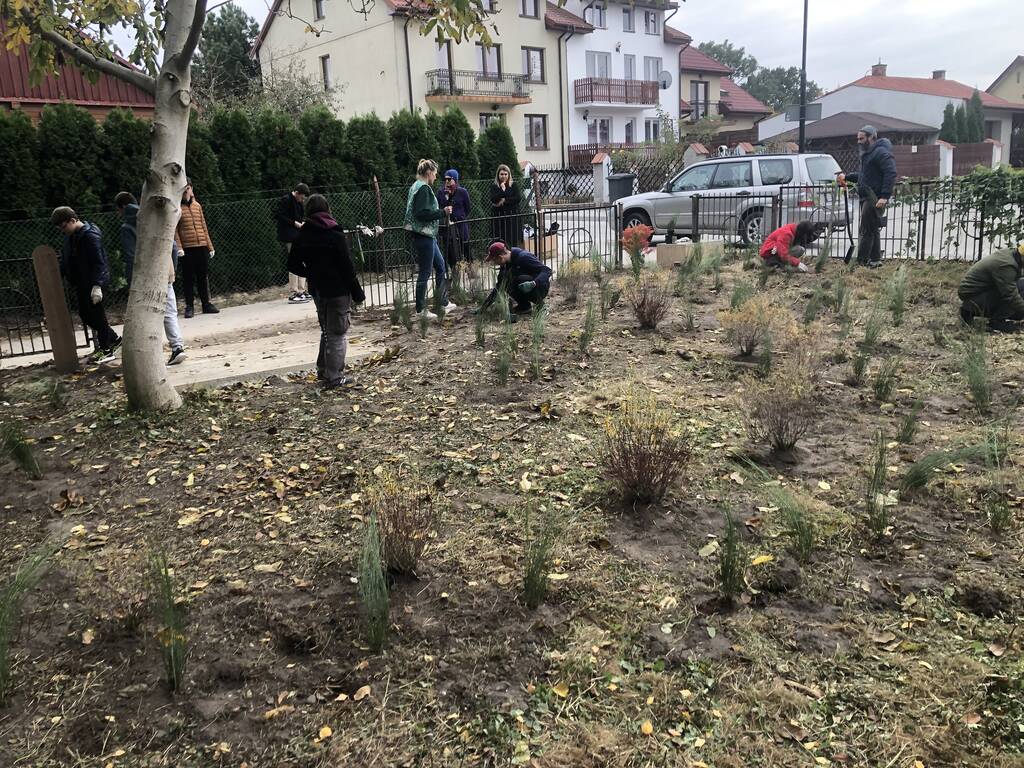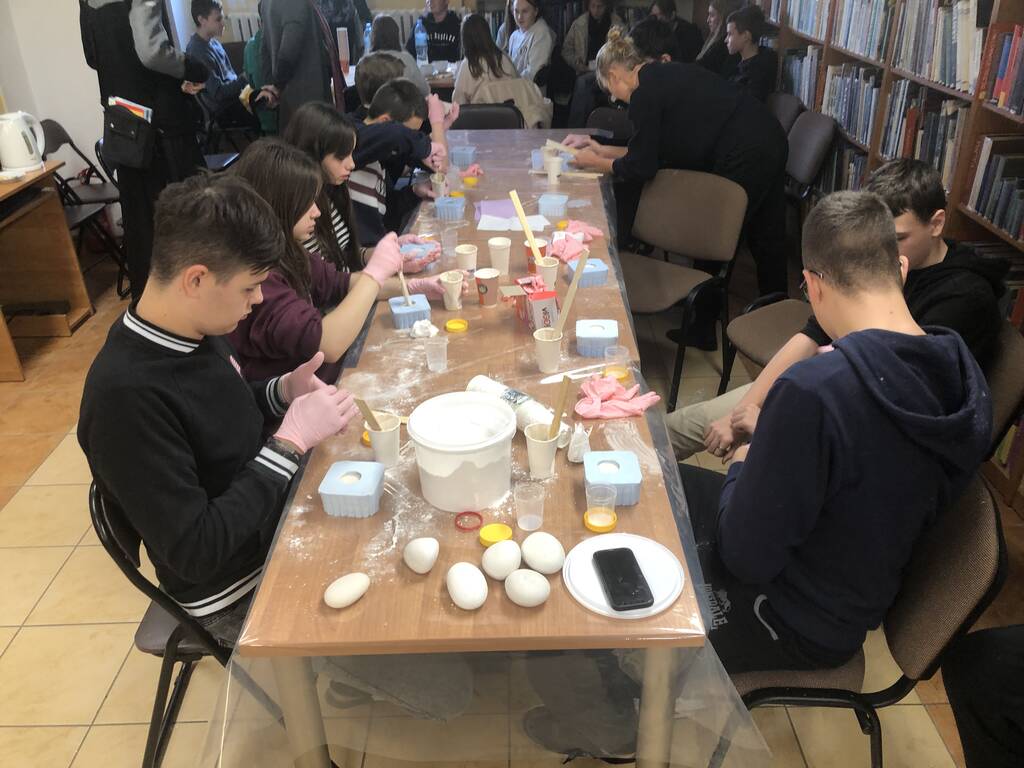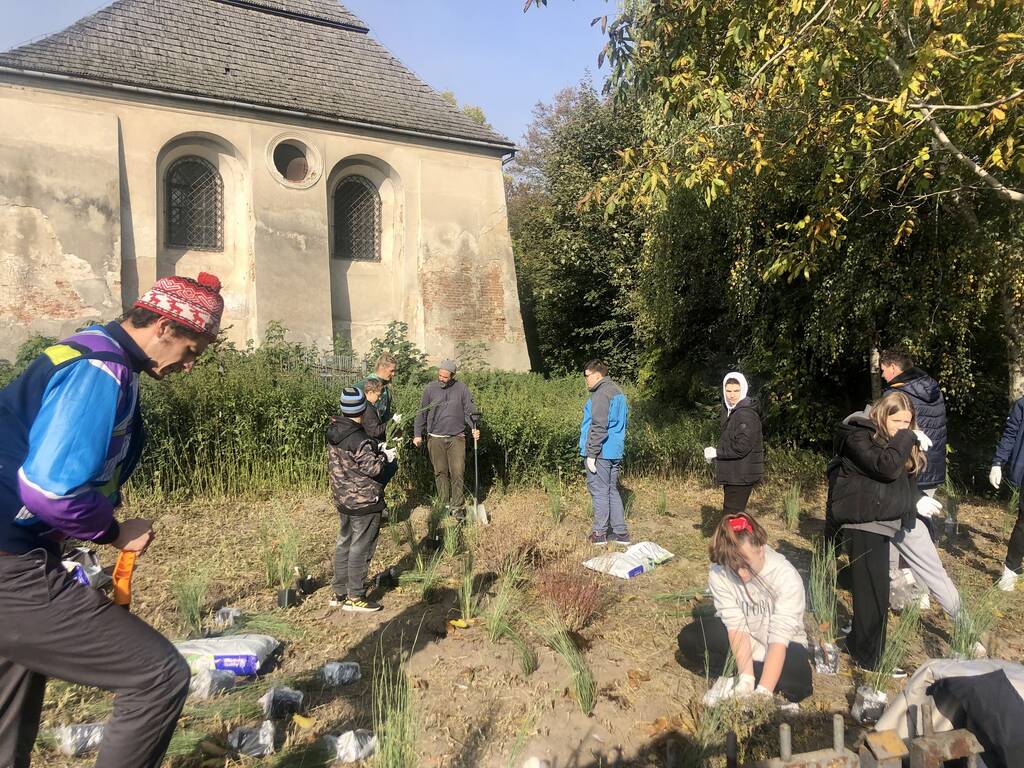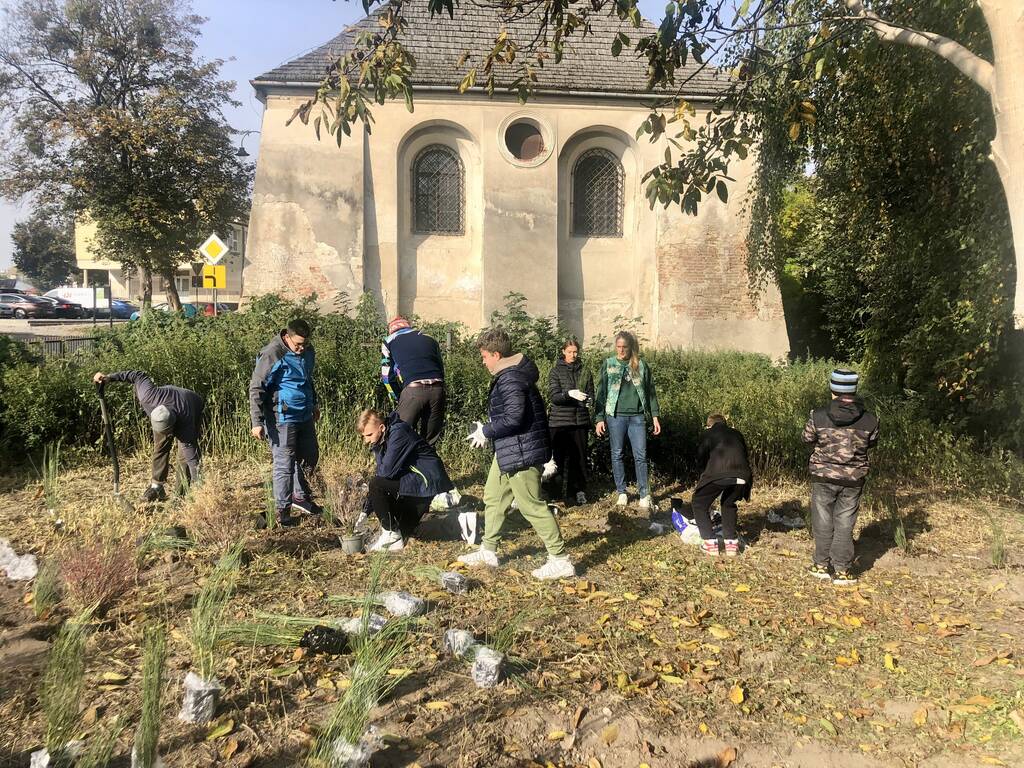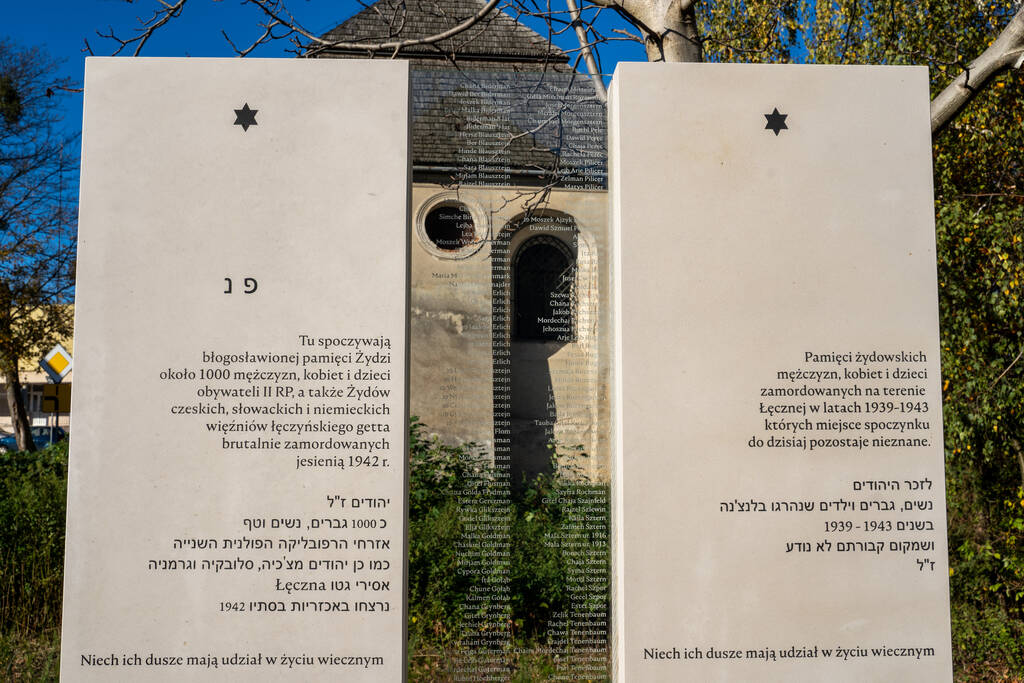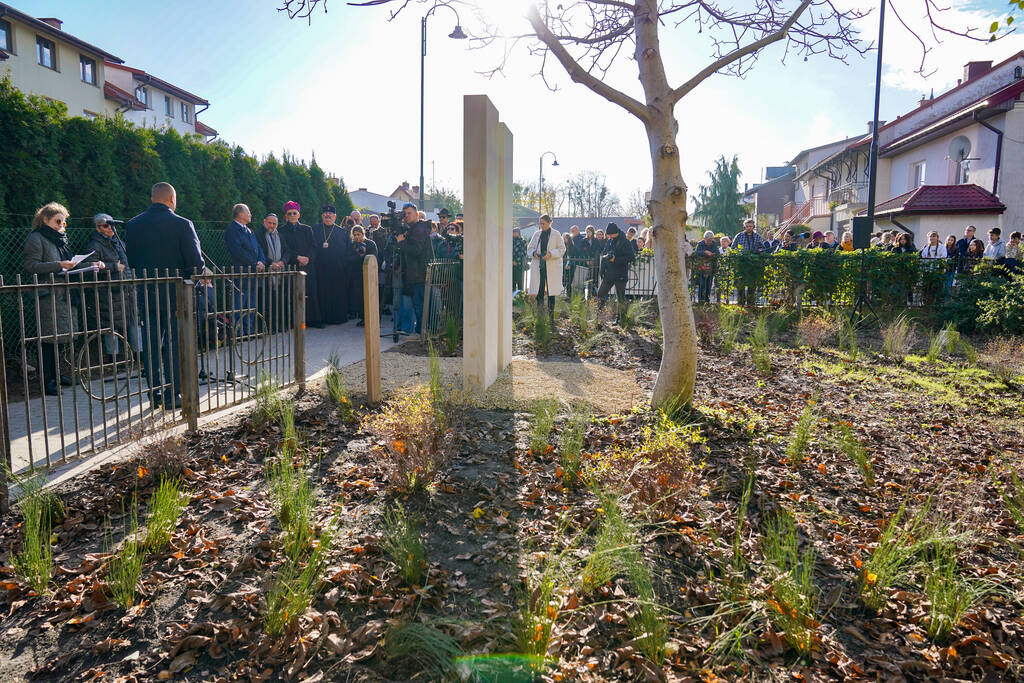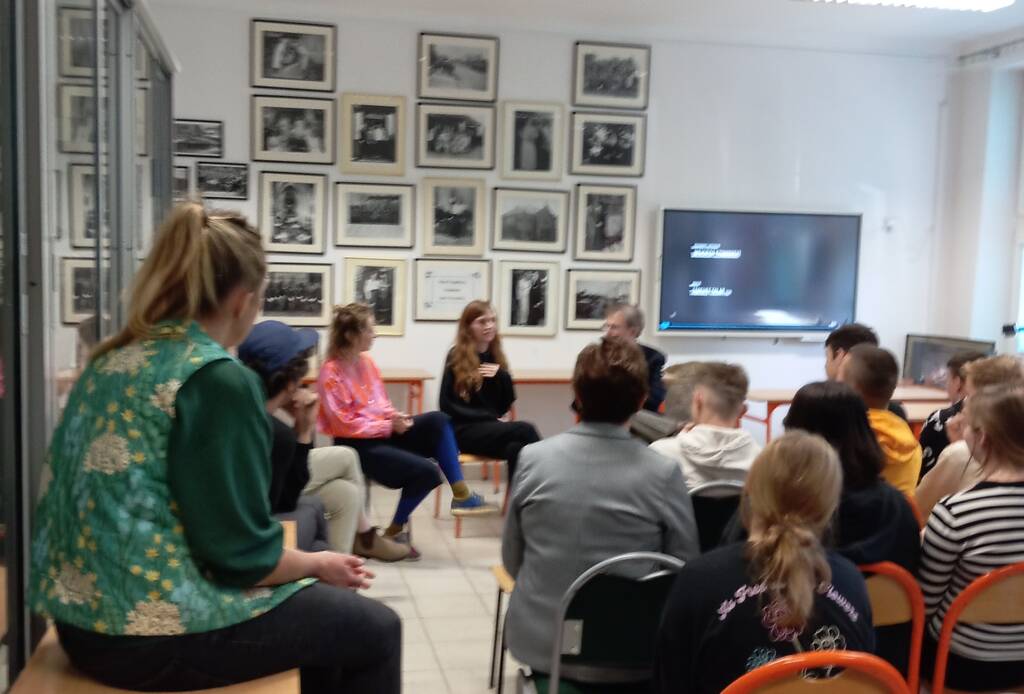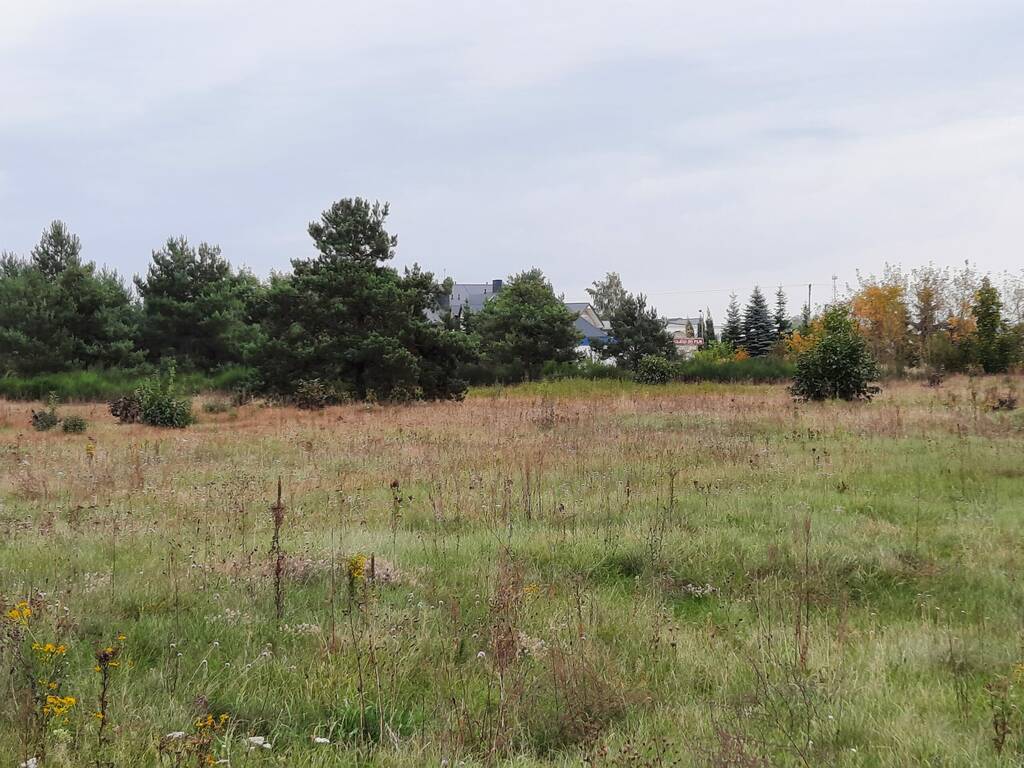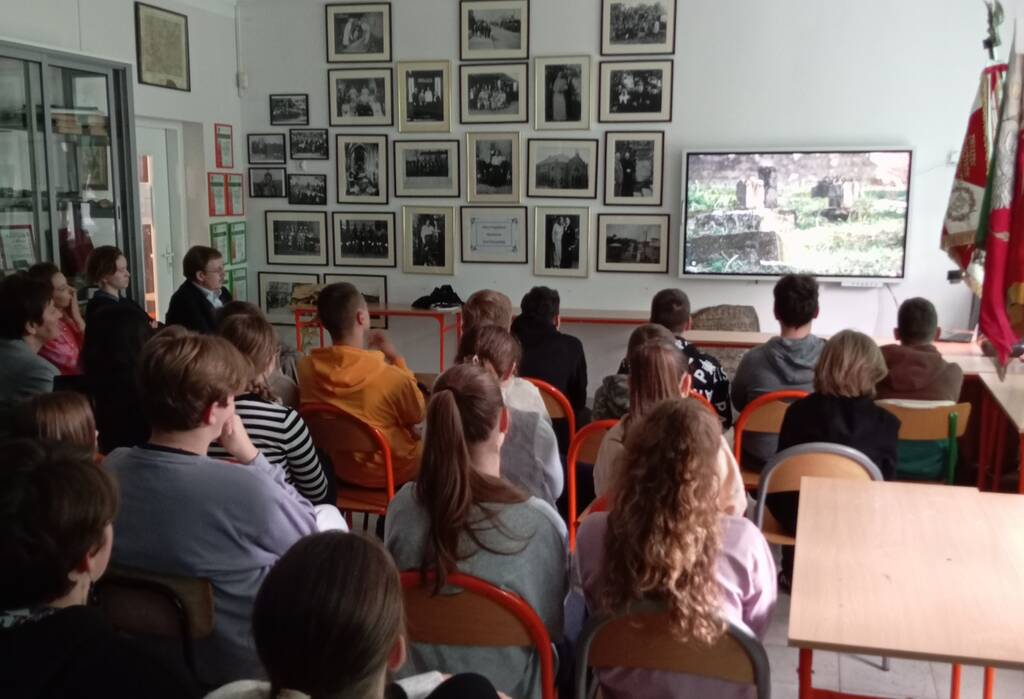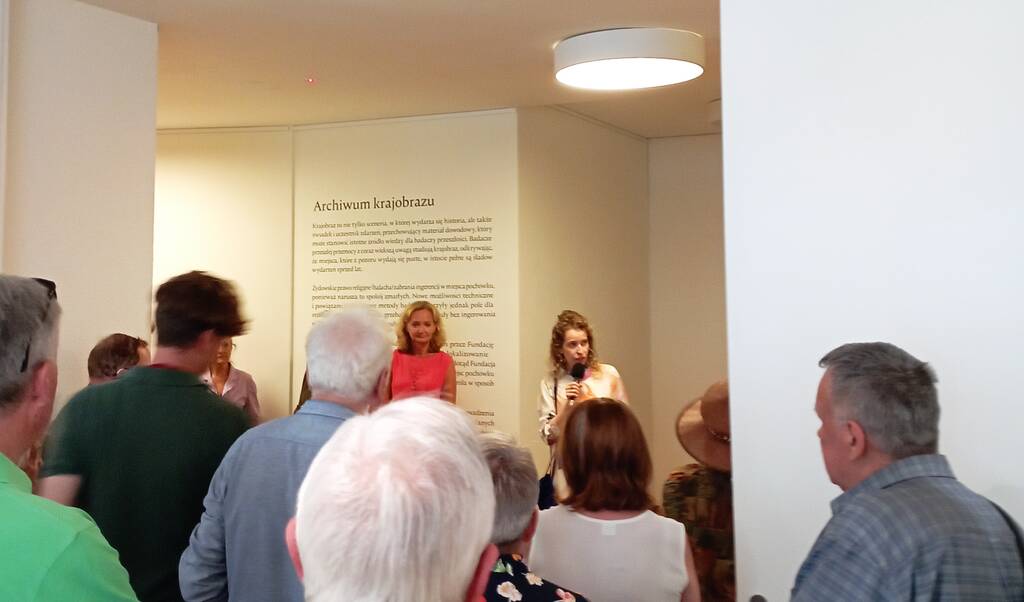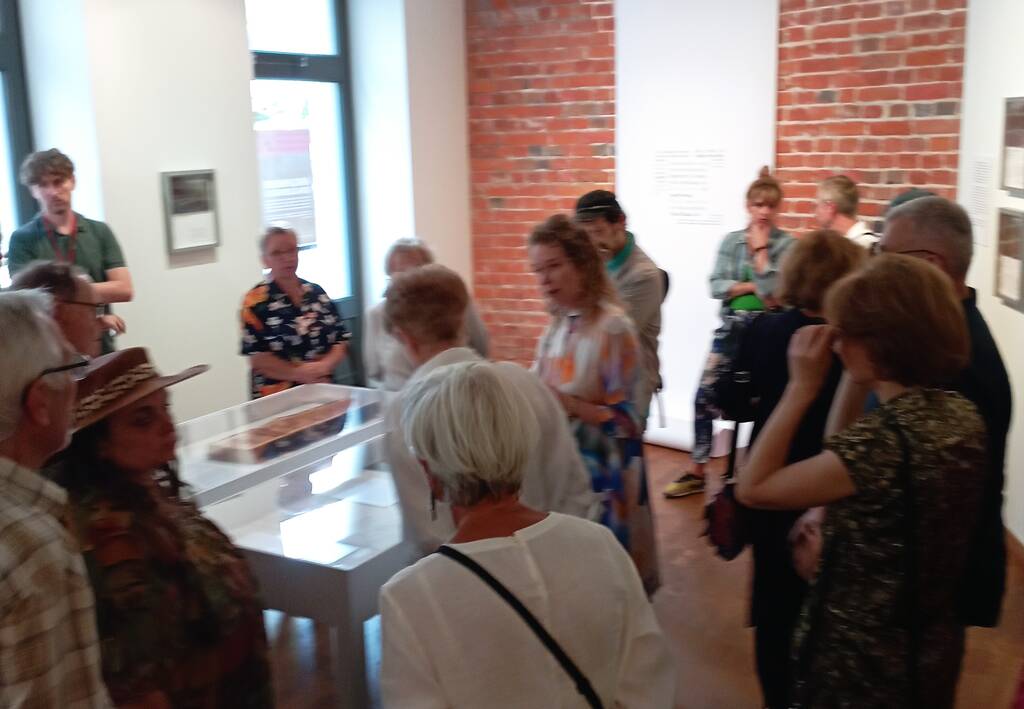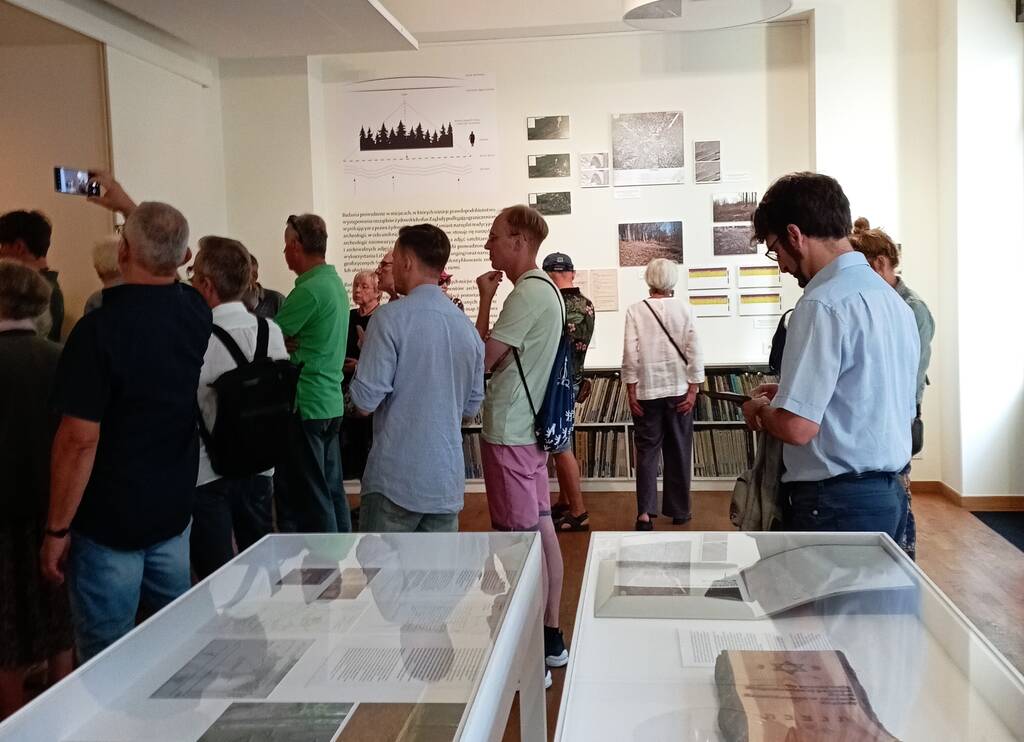we do
MultiMemo 2023-2025
Over the course of more than two years (2023–2025), we have organised 47 events in several EU countries and online, attended by over 5,600 participants from 27 countries. We implemented the MultiMemo project together with partners from Poland, Germany, and Belgium: the Urban Memory Foundation, FestivALT, the Foundation for the Documentation of Jewish Cemeteries, the Culture of Closeness Foundation, JCC Warsaw, CEJI – A Jewish Contribution to an Inclusive Europe, Universität Würzburg, and Hochschule für Jüdische Studien Heidelberg.
The project produced 12 multilingual case studies, a six-part podcast, and digital documentation of nearly 40 cultural heritage sites. It also resulted in exhibitions, artworks, and research that introduced new perspectives into the public debate on the meaning of memory and the ways it is cultivated.
MultiMemo proposed an intersectional approach to remembrance – one that combines reflection on the past with responses to contemporary challenges, including violence, exclusion, and the migration crisis. All project results and experiences have been collected in the MultiMemo Playbook – an evolving online resource featuring articles, case studies, podcast episodes, 3D documentation of matzevot, a database of pre-war Jewish art collectors, an online exhibition, and research on Holocaust sites and Jewish cemeteries.
The project strengthened the partners’ cooperation with public institutions in Poland and was part of cultural diplomacy, including its presentation in Brussels during the Polish Presidency of the Council of the EU in 2025. MultiMemo provided communities, educators, and local leaders with practical tools, knowledge, and inspiration for working with difficult history, supporting dialogue, the preservation of cultural diversity, and actions for social justice.
The MultiMemo project was funded by the European Union (CERV programme). Views and opinions expressed are solely those of the author(s) and do not necessarily reflect those of the European Union. The European Union cannot be held responsible for them.



Social Laboratory of Jewish Heritage
“Social Laboratory of Jewish Heritage” is an educational and artistic project implemented in 2025 by the Zapomniane Foundation in cooperation with artists, local communities, and partners from Poland and Germany. Its goal was to restore the memory of forgotten burial sites of Holocaust victims and to develop new, inclusive, and ethical forms of commemoration.
The project activities took place in three locations: Przegaliny Małe, Pawlichy, and Las Chodówki – small villages and rural areas where executions of Jewish residents took place during World War II. In each location, commemorative interventions – artistic, landscape-oriented, and educational – were carried out, engaging local communities in the process of discovering, understanding, and commemorating the burial sites.
Jewish artists from Poland and Germany were involved in the project, including Atalya Laufer, Anna Schapiro, Natan Kryszk, Marcin Król, Alex Roth, and landscape architect Natalia Budnik. The project combined contemporary art with local history, memory work with intergenerational and community activities. Each location resulted in a unique form of commemoration – a memory ritual, a landscape gesture, or a site-specific sound installation – created together with local residents.
The project demonstrated that it is possible to build a shared, empathetic memory – not through erecting monuments, but through action, presence, and relationships. Its results include not only physical interventions in space but also bonds, conversations, and collaborations that have permanently embedded the forgotten burial sites into local landscapes of memory.
Co-financed by the Ministry of Culture and National Heritage as part of the Cultural Program of the Polish Presidency of the Council of the European Union 2025 within the SYNERGIE grant program.
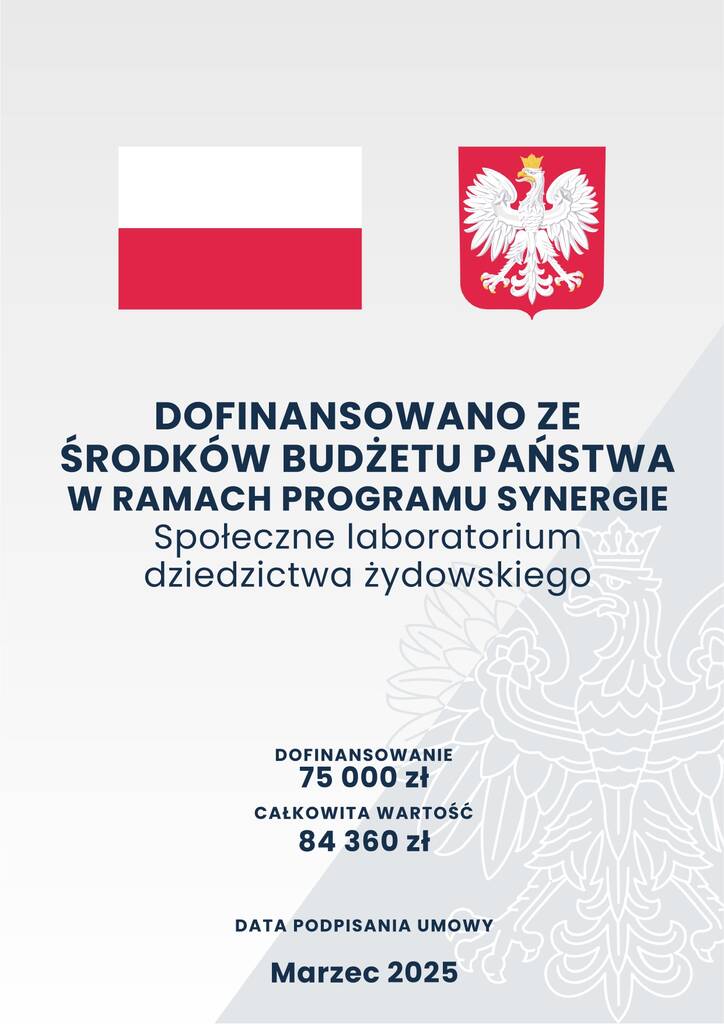
NeDiPa 2022–2024
The NeDiPa: Negotiating Difficult Pasts project focused on twelve neglected sites of Jewish heritage in Poland, where Jewish, Polish, and German histories and legacies intersect – places that bear witness to the complex and painful experiences of the 20th century. The destruction of Jewish communities in Poland and Central and Eastern Europe left behind a difficult heritage – sites where the processes of commemoration and revitalisation often encounter resistance or blockage due to strong taboos.
In response to these challenges, the project developed the Difficult Heritage Remembrance Framework, grounded in the principles of inclusivity, a balanced approach, and epistemic justice. Over the two years of the project, more than thirty onsite and online events were organised – from commemorations, conferences, and community-building meetings to public events and educational trainings. They brought together residents, NGOs, researchers, local governments, policymakers, teachers, architects, artists, and activists, creating space for dialogue and cooperation.
As a result of NeDiPa’s work, a set of tools, good practices, and guidelines was created to support collaboration between diverse groups and to propose a new approach to memory and commemoration, relevant to the challenges of the 21st century. These include the Difficult Heritage Remembrance Toolbox and Guidelines, which feature definitions of key concepts, educational materials, and practical tools for activists, professionals, teachers, and decision-makers, as well as the Multimedia Library with audiovisual resources based on NeDiPa’s online training sessions. Although the Framework was developed in the context of Central and Eastern Europe, it is universal in scope and can serve as an inspiration for other countries dealing with the issues of difficult heritage.
The project had a significant impact on local cultures of memory throughout Poland. Twelve commemorative events were held, introducing and popularising new forms of action, such as green commemorations and artistic interventions as acts of memory. Over two years, 209 activists and volunteers became involved in caring for Jewish heritage sites, building a network of grassroots initiatives and integrating them into mainstream commemoration practices.
Thanks to NeDiPa, the cooperation between three Polish partners – the Zapomniane Foundation, FestivALT, and the Urban Memory Foundation – evolved into the broader European Engaged Memory Consortium, which continues its work within new projects and partnerships. The project helped shift attitudes among both Jewish and non-Jewish organisations in Poland, fostering the creation of coalitions, networks, and a more open, inclusive culture of remembrance.
The NeDiPa project was funded by the European Union (CERV programme).


ReActMem – a new project Rescue Memory – activism, art and public memory (ReActMem)
In April 2024, we launched another project financed by the European Union (CERV program), this time with twelve partners from EU countries. Over the next two years, we will work together with them and local partners.
As part of ReActMem, we will continue working on difficult heritage, support educational activities, involve residents and organize more public events. We are working on new forms of commemoration, new ways of talking about the past, which is still little present or most often silenced at the social and scientific level.
Our project partners are: Urban Memory Foundation, FestivALT, Brama Cukermana, Grupa Badaczki na Granicy – PAN, JCC Warsaw, Fundacja Dokumentacji Cmentarzy Żydowskich, Żydowskie Stowarzyszenie Czulent, CEJI – A Jewish Contribution to an Inclusive Europe, LABA – A Laboratory of Jewish Culture, Marom Klub Egyesület, University of Würzburg and the Jewish Community of Estonia. The aim of the project is to inspire a collective effort to unite activists and institutions to explore and work with the past for the sake of a better future. Through a series of 65 events and initiatives, the consortium partners will explore the dynamics between activist movements and public memory narratives, both shaping and transforming the culture of memory in contemporary Europe.
The final result of the project, ensuring the transferability of experiences, ideas and solutions to other EU countries, will be the Rescue Memory Handbook for activists and public institutions, presenting the analysis, knowledge, best practices and practical tips on the subject collected by the project partners.
The Zapomniane Foundation will conduct 11 events as part of the ReActMem project.
Views and opinions expressed are solely those of the author(s) and do not necessarily reflect those of the European Union. The European Union cannot be held responsible for them.
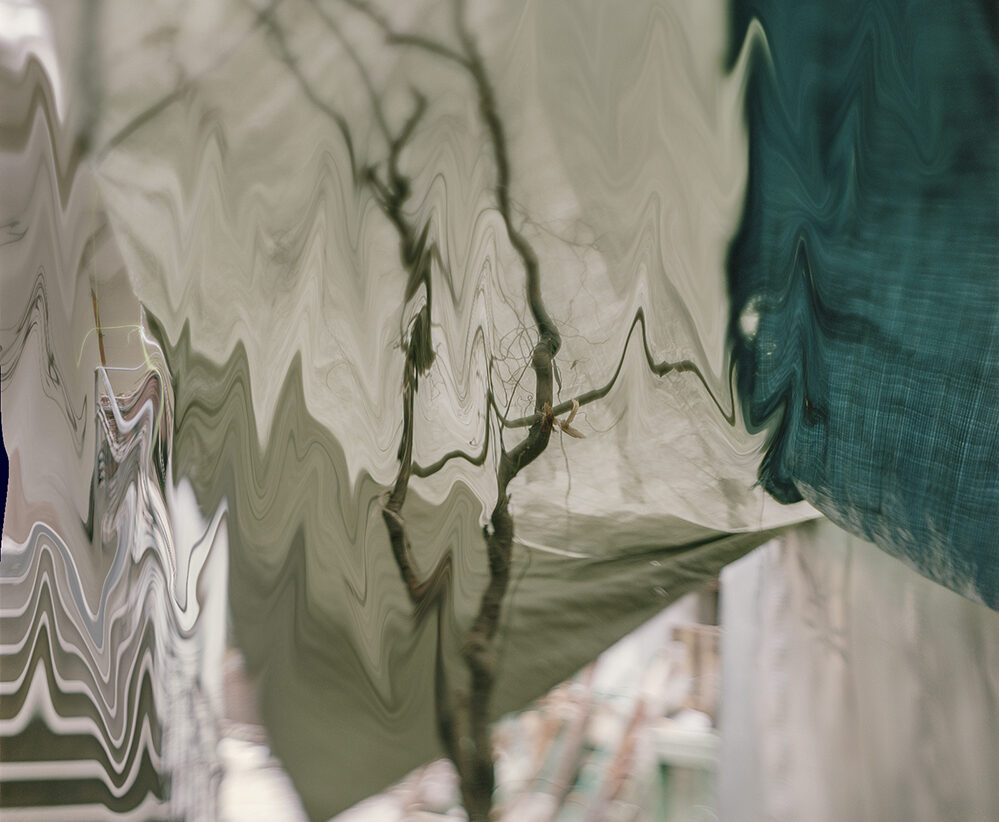
MultiMemo -BRESLAU/WROCŁAW 1933-1949: STUDIES ON THE TOPOGRAPHY OF THE SHOAH
As part of the MultiMemo project, our partner organization Urban Memory Foundation organized a series of three events in Wrocław on November 23 and 24, 2023, related to the premiere of the book “Breslau/Wrocław 1933 – 1949: Studies on the topography of the Holocaust”, touching on topics related to the project. The series included: 1) a scientific session, 2) a public session as part of the OP_BOOKS series and 3) a city walk around Jewish places related to the history of the Holocaust discussed in the book. UMF, together with its partners, the Dresden University of Technology, the Department of Jewish Studies of the University of Wrocław, the OP ENHEIM Foundation and the German-Polish Foundation for the Protection of Cultural Monuments, invited the academic community and the general public of Wrocław to a series of meetings with editors Maria Luft and prof. Tim Buchen and the book’s co-authors: Annelies Augustyns, Karolina Jara, Agnieszka Jabłońska and Daniel Ljunggren.
In the book, which was the focus of our series of events, the authors take a new look at the history of the Holocaust in Wrocław. The interdisciplinary team selected various perspectives and contexts in which exclusion, persecution and extermination occurred in urban space and reconstructed places and spheres of Jewish life: work and housing, religion and politics, art and culture. The effects of the Holocaust were also examined in retrospect – for example in relation to cemeteries, city cartography, memories of Wrocław or archival sources regarding the Holocaust. The talks during the series of events concerned, among others: the importance of topography and the adopted unusual time frame of research, 1933–1949, as opposed to the usual look at the history of Wrocław before and after 1945. The adopted perspective allowed us to notice the interconnection of worlds, the pre- and post-war ones, and to notice the continuity of some processes, such as functioning of the school in the building at the current Żelazna Street, liquidation of the Jewish cemetery at Gwarna Street, or contemporary challenges related to the preservation and commemoration of some places, such as the area of the New Synagogue at Łąkowa Street, where the 19th-century foundations of the building are still located.
The book is the result of several years of research work by an international interdisciplinary team of 22 people from 6 countries, conducted in 2018–2021 by the Dresden University of Technology. It was published in October 2023 by Neofelis Verlag, and the texts were written in English or German. Link to publication. Link to the photo reportage from the public book launch.
The MultiMemo project was funded by the European Union (CERV programme). Views and opinions expressed are solely those of the author(s) and do not necessarily reflect those of the European Union. The European Union cannot be held responsible for them.


Multimemo: Festival Zbliżenia Gdańsk 06/09/2023 – 12/11/2023
Zbliżenia Kultur Foundation is another organization that took part in the MultiMemo project, implementing a rich program of the 11th edition of the Zbliżenia Jewish Culture Festival.
The festival program, in addition to proposals introducing and promoting Jewish culture, tradition and art, included events focusing on Polish-Jewish-German relations, the position of women in the modern world and the relations and interpenetration of Jewish, Polish and German cultures.
As part of the project, the Zoom Culture Foundation conducted, among others: the following events:
- Radio play “The Devil Has Dwelled in Europe”.
- A concert of original poetry “Kinot” by Jarosław Lipszyc dedicated to contemporary Jewish poetry.
- Concert by Mari K. “Di szajchesen – connections”.
- Lecture “Around the Great Synagogue” – meeting with the author of the book under the same title, Jacek Bielak.
- Anti-discrimination workshops dedicated to children from Gdańsk Children’s Homes.
- Workshops for students of the Secondary School of Fine Arts in Gdańsk and children from Gdańsk Children’s Homes in the New Synagogue in Gdańsk.
7.Celebrations on the occasion of the 85th anniversary of Kristallnacht – commemoration of the pogrom of the Jewish community committed by German Nazis in November 1938. The MultiMemo project was funded by the European Union (CERV programme). Views and opinions expressed are solely those of the author(s) and do not necessarily reflect those of the European Union. The European Union cannot be held responsible for them.


MULTIMEMO: PARTICIPATORY MEMORY WORKSHOP – Łęczna 19.10.2023
On October 19, 2023, in Łęczna, we conducted participatory memory workshops around the burial place of approximately 1,000 Jews from Łęczna. The educational workshop was aimed at involving and engaging school youth in the process of care for the burial site preceding the planned commemoration of the site. The workshops took place at the Municipal Public Library in Łęczna, which is located in the building of a 19th century building (so-called “small synagogue”) which before the II WW was a Jewish house of prayer and a Jewish school. The library is located next to the Great Synagogue and the commemorated burial site.
The workshop consisted of two parts. The first part was led by landscape architect Natalia Budnik, who created a concept and design of how to use plants in the vicinity of the burial site and a planned monument. She introduced her ideas and her design to the youth and they collectively planted plants in the area under her supervision. The second part was a result of our cooperation with a conservator of monuments who was also part of the project team responsible for preparing the monument in Łęczna, She prototyped the idea of making small stones out of “marble flour”. An introduction was made about the meaning of stones and placing stone on graves in Judaism and after that the youth made their own small white pebbles in specially prepared forms. The stones were prepared for the commemorative ceremony to be placed on the tombstone in accordance with Jewish tradition.
The workshop took place a few weeks before the commemorative ceremony (7.11.2023), which was attended by young people and residents of the town, clergy of three denominations, local authorities, representatives of various organizations, descendants of Jews from Łęczna and the Jewish community from Lublin. The youth could see the results of their work and place the “memory stones” next to the monument.
The MultiMemo project was funded by the European Union (CERV programme). Views and opinions expressed are solely those of the author(s) and do not necessarily reflect those of the European Union. The European Union cannot be held responsible for them.


FUTURE OF OUR PAST
There are many Polish-Jewish stories that have not yet been told. Or they are known only to a few – experts who research specific topics. Or they are talked about among memory activists, but they never reach wide circulation and do not become part of common knowledge.
In order to change this and bring to the surface at least some of these stories – such as pre-war kibbutzim operating in many cities and towns in Poland, the stories of Jewish women activists and fighters, or Nobel Prize winners who were unjustly absent from history classes – we are carrying out thanks to the support of the Embassy American in Poland educational project for youth “Future of Our Past”, the aim of which is to jointly take care of the future of our past.
We will organize workshops in the form of Wikipedia edit-a-thons in five Polish cities to expand our knowledge of some of these stories together with young people and invited experts.
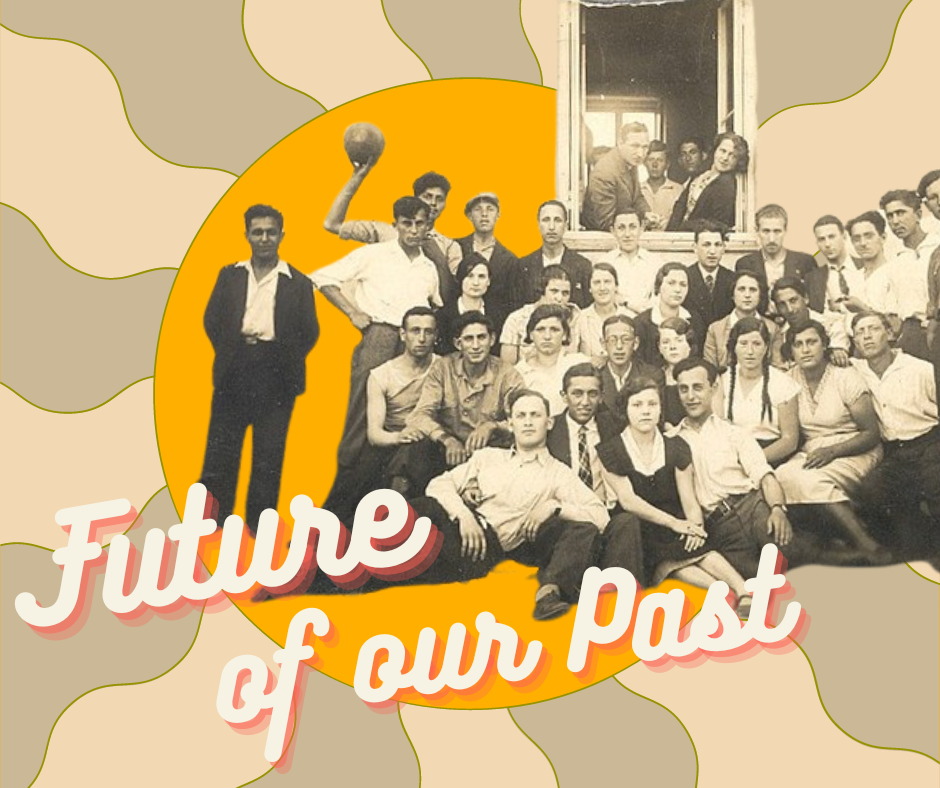
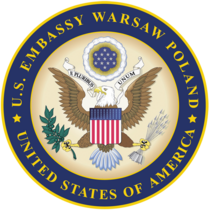
MULTIMEMO: PARTICIPATORY MEMORY WORKSHOP – Kałuszyn 17.10.2023
On October 17, in Kałuszyn, we conducted participatory commemoration workshops, the topic of which was commemorating the Jewish history of the city, the Jewish cemetery and the mass grave of Holocaust victims as part of the MultiMemo project.
The workshops were an attempt to transform the innovative commemorative practice we created – green commemorations – into a participatory event. The event began with a screening of the film “Ukos Światła”, and was followed by a meeting with the descendants of Kałuszyn Jews, Wiktoria Kurtz and her father Artur Kurtz. This was Wiktoria’s third visit to the school in her efforts to build long-term relationships with the local community, but for her father, the son of Kałuszyn Jews, it was the first visit to the city and Poland. They shared their family history, talked about who they were and what their intentions were (restoring the memory of the Jewish past in Kałuszyn) and talked to children who could ask questions and build relationships with them
The aim of the workshops was to involve local youth – 7th grade students of the Primary School in Kałuszyn – in the process of long-term involvement in building and cultivating local Jewish memory. The third part of the workshop was a conversation with landscape architect Natalia Budnik, who, together with Victoria Kurtz, presented to the youth the idea of marking the boundaries of the Jewish cemetery and mass grave with plants (in line with the idea of “green commemoration”). Together they presented the idea and brought to school plants selected for planting in the cemetery. The children learned about the plants, could touch them and ask questions. After the workshops, the plants were planted in pots on the school premises so that the children could care for them throughout the winter and plant them in the cemetery in the spring.
The idea of the workshops was to expand the idea of “green commemorations” and develop a methodology in which it can be a longer process involving the local community. Thanks to successful cooperation with the school, children will take care of the plants until spring, when they will plant them in a designated place in the cemetery.
The MultiMemo project was funded by the European Union (CERV programme). Views and opinions expressed are solely those of the author(s) and do not necessarily reflect those of the European Union. The European Union cannot be held responsible for them.


MULTIMEMO – EXHIBITION OPENING: LANDSCAPE ARCHIVE – 25/08/2023
As part of Knowledge Mobilization, we organized an exhibition on places with difficult heritage – in particular: uncommemorated burial places of Holocaust victims, which are objects of repeated exclusion – as places of the history of Jews and Roma, as burials of civilians, including women and children, etc. The exhibition was presented in the Austrian Cultural Forum as part of the Singer’s Warsaw Festival from August 25, 2023 to September 8, 2023. The exhibition was based on artistic research of these burial places conducted by the Zapomniane Foundation. As we studied the landscape with increasing care, we discovered that places that seemed empty were actually full of traces of events that had happened years ago. The exhibition explores these traces, as well as the new artistic tools and technical possibilities and associated new research methods that have opened up the field to study topography without interfering with it in the way traditional archeology does, providing digital data about the knowledge archived in the landscape. The exhibition was an attempt to propose a new approach to commemoration and commemoration, more interdisciplinary and intersectional, combining art, activism and academia.
The MultiMemo project was funded by the European Union (CERV programme). Views and opinions expressed are solely those of the author(s) and do not necessarily reflect those of the European Union. The European Union cannot be held responsible for them.


